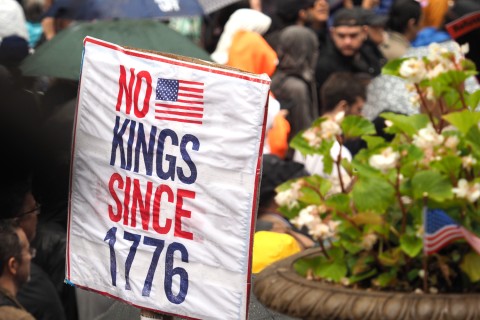Reading ourselves reading the Bible
For more commentary on this week's readings, see the Reflections on the Lectionary page, which includes Saunders's current Living by the Word column as well as past magazine and blog content. For full-text access to all articles, subscribe to the Century.
The hyperbole, violence, and abrupt scene changes in Matthew’s parable of the wedding feast have driven most interpreters to treat the story allegorically—thereby turning it from a dangerous puzzle to a reassuring message in code.
The most pernicious aspects of this allegorizing turn on the identification of those first invited to the feast, who not only ignore and reject the invitations but turn violent toward the king’s slaves, and then suffer destruction and the reduction of their city to ashes. These images are widely understood to refer to the plight of the Jewish people who reject Jesus and to the destruction of Jerusalem by the Romans in 70 CE. In turn, the second round of invitees, who are drawn from the streets of the city and include both good and bad, are thought to represent the (Gentile) church.
This traditional allegorical reading of the parable has, with good reason, led to charges of Christian triumphalism and antisemitism. Inevitably, allegorical readings of scripture say as much or more about the interpreters and their interests as they do about the text. In the case of the story of the king and his son’s wedding feast, Christian supersessionism has obscured and trumped the dynamics of the parable itself.
This week's Philippians reading has also been bedeviled by the interests and cultural assumptions that readers bring to it. In 4:2-4, Paul turns his attention to Euodia and Syntyche, two women in the Philippian congregation whom Paul names among his co-workers, women who have struggled together with him in the work of the gospel and whose names are written in the book of life. Despite this characterization of the women, readers of the letter have long persisted in the assumption the Euodia and Syntyche are troublemakers now involved in a cat fight.
It is more likely that Paul is encouraging these women to continue to model the “same mind”—i.e., the mind of Christ (2:5, 3:15)—just as he has lifted up Timothy, Epaphroditus, and himself as models in prior portions of the letter. Paul wants the letter’s recipients to support and encourage these women in the realization of this calling.
This reading also has the advantage of congruity with what we have learned from the history of the church: it is usually the women who provide the most important leadership.





